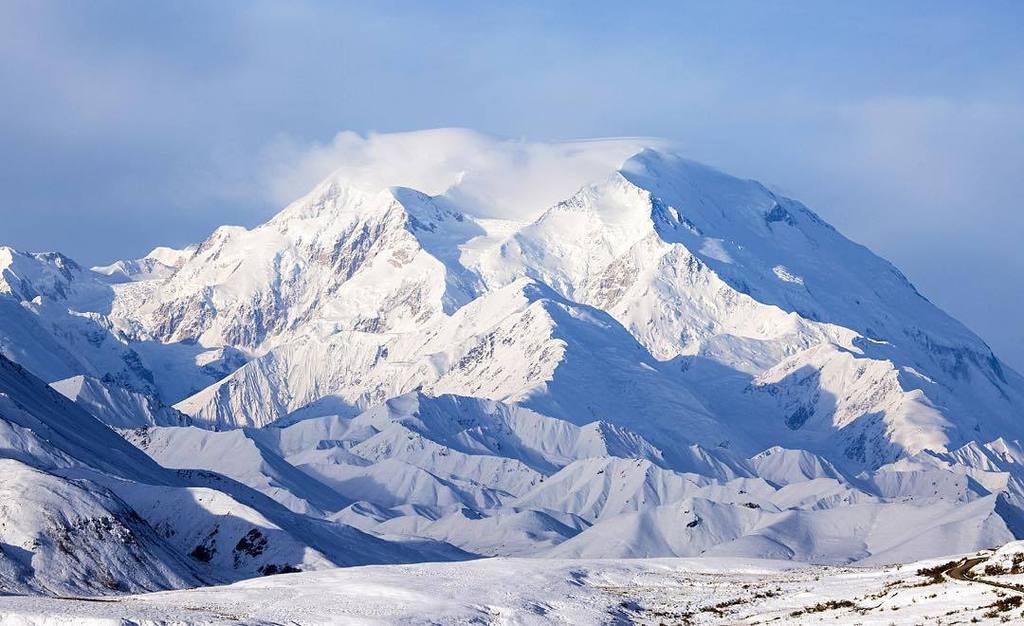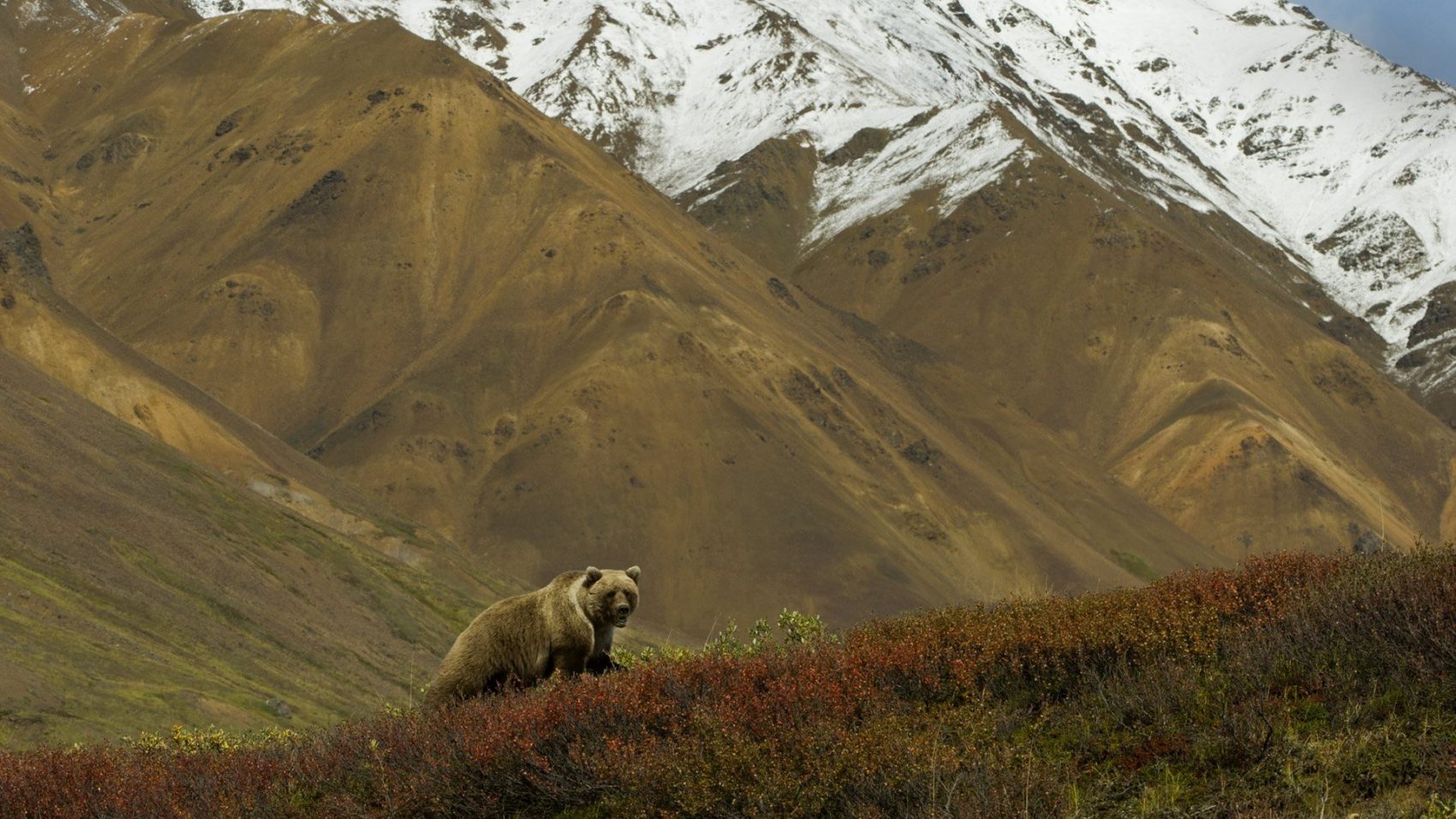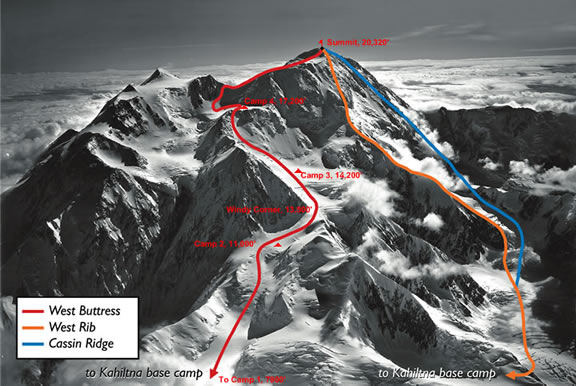
History
Standing at 20,310 feet above sea level, Denali is the highest point in North America. Although the indigenous Koyuknons have referred to it as Denali for hundreds of years, the United States government acknowledged it as Mount McKinley from 1917-2015. The name Mount McKinley originally came from a gold miner that wanted to express his support for William McKinley, who was eventually the 25th president of the United States. It is believed that Denali formed around 60 million years ago, and since then, it has been the main attraction of the Denali National Park and Preserve.
Location
The Denali National Park and Preserve is located on the Alaska Range. The closest city to the national park is Fairbanks which is 125 miles away, and Anchorage which is around 250 miles away. To get here, visitors can drive, get on a bus or train, or even fly into McKinley National Park Airport. There are several notable glaciers on the mountain that flow into the surrounding rivers and lakes below. The variation of climate, elevation, and terrain allows for incredible animals to thrive here.
“In simple numbers, many animals live in this beautiful and remote place:
- 1 species of amphibian
- 39 species of mammals
- 169 species of birds
- 14 species of fish
- 0 species of reptiles”
The National Park Service says that lucky visitors will be able to spot “grizzly and black bears, wolves, caribou, moose and Dall’s sheep [as well as] arctic ground squirrels, red squirrels, foxes, and marmots.” With abundant wildlife, terrain, and climate, visitors need to be well prepared and ready for anything.

Climate and Geology
On Denali, several weather stations are located at different altitudes that reach as high as 19,000 feet. According to the National Park Service, Denali has reached temperatures as high as 91°F and as low as -54°F. Denali’s average annual snowfall is around 77 inches, and the most snow ever recorded on the ground at once was “56 inches on March 26, 1991“. At elevations as high as 20,000 feet, oxygen levels are significantly affected, and temperatures fluctuate greatly. Although Denali is not a volcano, it is a granitic pluton, or in other words, “a blob of magma or ‘lava’ that has cooled and solidified.” Covered with snowfields, cliffs, chutes, and pretty much every type of mountainous terrain imaginable, the mountain makes for great hiking, skiing, climbing, and all other types of outdoor recreation.
Climbing
Summiting Denali is not an easy task. First attempted in 1903, many have failed to reach the peak of Denali, starting with Alaskan Judge James Wickersham. Stumped by what is now known as the “Wickersham Wall,” the Alaskan Judge and his four partners were not prepared to make it past a steep, bumpy zone of extreme avalanche danger. Just 3 years later, Frederick Cook claimed that he had summited Denali. However, he did not have photo evidence to prove it, and several of his team members (who he left behind) publically expressed their doubts. The only photo that Cook did take was found to be of a smaller peak, not very close to the summit, which is now known as “Fake Peak.” Finally, in June of 1913, the South Summit Peak, the highest point of Denali, was credibly and verifiably summited by a group of four Alaskan men. These men were smart enough to take legitimate pictures proving their summit and are the true pioneers of climbing Denali. Regardless of failure or success, though, Wickersham, Cook, and the four men who actually made it up, led by Hudson Stuck, are some of the most influential climbers in North America and definitely Alaska. In the time since, “more than 32,000 people have attempted to reach the summit, but only a few reach the top. There was about a 60 percent success rate in 2016″.
“The West Buttress, West Rib, Cassin Ridge, and Muldrow are the most frequently climbed routes on Denali. The West Buttress and the Muldrow are the least technical ascent routes; the primary climbing difficulties are crevasses, steep ice and exposed ice-covered ridges and, of course, the environment”.

Skiing
The first credible ski descent of Denali did not occur until the 1970s when a group from Switzerland “skied from the summit, down the Messner Couloir, and out to Base Camp.” The statistics surrounding the average number of skiers on Denali per year is limited. However, it is estimated that “people skiing off of the mountain is still less than 10 percent of the annual number of people who climb”. To effectively ski Denali, one must be an expert climber, mountaineer, skier and ready to face any number of challenges that the mountains and high-altitude may present. Death and illness are always potential problems, and Denali needs to be both ascended and descended very methodically, thoroughly, and cautiously. Today, several organizations offer backcountry trips in Denali National Park and Preserve, but they tend to stick on the easier, more shallow side of things rather than the summit or any of the sub-peaks. Skiing or snowboarding down Denali is a huge individual accomplishment that very few can say they have achieved, yet those who have completed this journey have proven to be hugely impactful on the climbing, mountaineering, and skiing communities.
One thought on “A History Lesson on Denali, AK: North America’s Tallest Peak”